
Another Green World is the third solo studio album by English musician Brian Eno, released by Island Records on 14 November 1975. The album marked a transition from the rock-based music of Eno's previous releases towards his late 1970s ambient work. Only five of its fourteen tracks feature vocals, a contrast with his previous vocal albums.
Ambient techno is a subgenre of techno that incorporates the atmospheric textures of ambient music with the rhythmic elements and production of techno. It was pioneered by 1990s electronic artists such as Aphex Twin, Carl Craig, The Orb, The Future Sound of London, the Black Dog, Pete Namlook and Biosphere.

Ambient 1: Music for Airports is the sixth studio album by English musician Brian Eno, released in March 1978 by Polydor Records. It is the first of Eno's albums released under the label of ambient music, a genre of music intended to "induce calm and a space to think" while remaining "as ignorable as it is interesting". While not Eno's earliest entry in the style, it is credited with coining the term.

Selected Ambient Works Volume II is the second studio album by the British electronic music artist and producer Richard D. James under the alias of Aphex Twin. It was released on 7 March 1994 through Warp Records. Its title follows James's debut Selected Ambient Works 85–92. Unlike that record, most of the tracks are purely ambient music, without the earlier volume's ambient techno beats. James said the music was inspired through lucid dreaming, and likened it to "standing in a power station on acid."

Amber is the second studio album by English electronic music duo Autechre, released on 7 November 1994 by Warp. It was the first Autechre album to be composed entirely of new material, as their debut album Incunabula (1993) was a compilation of older tracks.

Discreet Music is the fourth studio album by Brian Eno, and the first released under his full name. The album is a minimalist work, with the titular A-side consisting of one 30-minute piece featuring synthesizer and tape delay. The B-side features three variations on Canon in D Major by Johann Pachelbel, performed by the Cockpit Ensemble and conducted by Gavin Bryars.

Ambient 2: The Plateaux of Mirror is a 1980 studio album by Harold Budd and Brian Eno. A work of ambient music, it is the second installment of Eno's Ambient series, which began in 1978 with Ambient 1: Music for Airports. Ambient 2 consists mainly of minimalist composer Budd playing improvisational piano in soundscapes produced by Eno. The album received positive reviews and led to Budd and Eno collaborating again for the sonically similar The Pearl (1984).
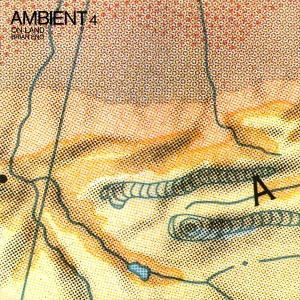
Ambient 4: On Land is the eighth solo studio album by Brian Eno, released in March 1982 by EG Records. It was the final edition in Eno's Ambient series, which began in 1978 with Ambient 1: Music for Airports. The album was released to critical acclaim, and is recognised along with its predecessors as a landmark album in the history of the ambient genre.
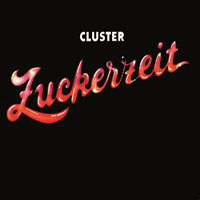
Zuckerzeit is the third studio album by German band Cluster, released in 1974 on Brain Records. It was co-produced by Michael Rother, their bandmate in side-project Harmonia. The music on Zuckerzeit marks a shift from Cluster's abrasive early work toward a more rhythmic, pop-oriented sound. Pitchfork ranked the album at number 63 on its list of the top 100 albums of the 1970s, while writer and musician Julian Cope included Zuckerzeit in his "Krautrock Top 50" list.

Fourth World, Vol. 1: Possible Musics is an album by Jon Hassell and Brian Eno. It was recorded at Celestial Sounds in New York City and released in 1980 by Editions EG, an imprint label of E.G. Records. "Fourth world music" is a musical aesthetic described by Hassell as "a unified primitive/futuristic sound combining features of world ethnic styles with advanced electronic techniques." The album received praise from many critics.
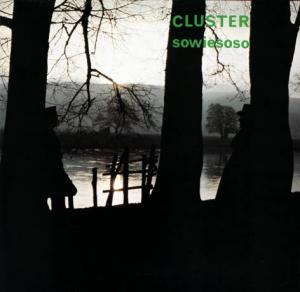
Sowiesoso is the fourth studio album by German electronic music band Cluster, released in 1976. It was Cluster's first release for Sky Records. Sowiesoso was recorded in just two days in Forst, Germany in 1976 and mixed at Conny's Studio in Wolperath.

Brian Peter George Eno, also mononymously known as Eno, is an English musician, songwriter, record producer and visual artist. He is best known for his pioneering contributions to ambient music and electronica, and for producing, recording, and writing works in rock and pop music. A self-described "non-musician", Eno has helped introduce unconventional concepts and approaches to contemporary music. He has been described as one of popular music's most influential and innovative figures. In 2019, he was inducted into the Rock and Roll Hall of Fame as a member of Roxy Music.

Small Craft on a Milk Sea is a 2010 album by British musician and record producer Brian Eno. The album—his debut with Warp—was released in Japan on 19 October 2010, in the United States on 2 November, and the United Kingdom on 15 November. The album was recorded with collaborators Jon Hopkins and Leo Abrahams in 2009 and 2010 and was released in several formats, including Compact Disc; digital download; a box set featuring the album on Compact Disc, vinyl, and download, a bonus CD with four extra tracks, and a lithograph by Eno; and another box set with all of the previous media and a 12" square silkscreen print by Eno and a copper plate.
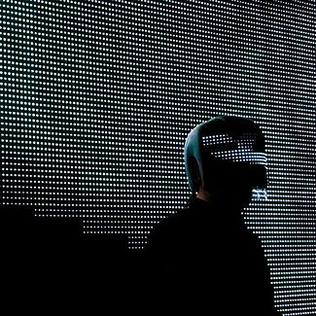
Ufabulum is the eleventh album by British electronic musician Tom Jenkinson, under the alias of Squarepusher. It was released on 15 May 2012 through Warp Records. Jenkinson has stated that "It's music which is generated purely from programming. There's no live guitar or drums, there's nothing in it which is live, really." At the time of release, Jenkinson made several appearances in festivals across the world, including his first show in Brazil, at the Sónar Festival.

R Plus Seven is the sixth studio album by American electronic musician Oneohtrix Point Never, released on September 30, 2013, as his debut album on Warp Records. The album's musical palette draws heavily on the synthetic sounds of MIDI instruments, 1980s synth presets, and VSTs.
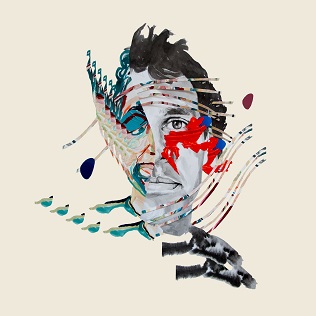
Painting With is the tenth studio album by American experimental pop band Animal Collective, released on February 19, 2016. The album is a follow-up to Centipede Hz (2012), and features contributions from John Cale and Colin Stetson. It peaked at No. 46 on the Billboard 200. Three singles were issued: "FloriDada" (2015), "Lying in the Grass", and "Golden Gal". A companion EP, The Painters, was released the following year.

The Ship is the twenty-sixth solo studio album by Brian Eno, released on 29 April 2016 on Warp Records. Announced on Eno's website on 24 February 2016, it was Eno's first solo album to contain vocals since 2005's Another Day on Earth. The Ship debuted at number 28 on the UK Albums Chart and is the second highest-charting solo album of Eno's solo career The album received critical acclaim.

Reflection is the twenty-seventh studio album by Brian Eno, released on 1 January 2017 on Warp Records. It is a piece of generative ambient music produced by Eno, which plays indefinitely via an app, modulating its output at different times of the day. A pre-recorded version of the album is available on CD and vinyl, which runs for 54 minutes. Digital streaming versions of the album update on a seasonal basis. It was nominated for the 2017 Grammy Award for Best New Age Album and was released to a positive acclaim by critics.

Death Peak is the eighth studio album by British electronic musician Chris Clark and the sixth one under the moniker Clark. Announced on 17 February 2017, it was released on 7 April 2017 by Warp Records. Upon its announcement its first single, "Peak Magnetic", was released freely for streaming on SoundCloud. The design of the album cover is that of a crumpled photograph of Clark himself, produced by photographer Alma Haser.
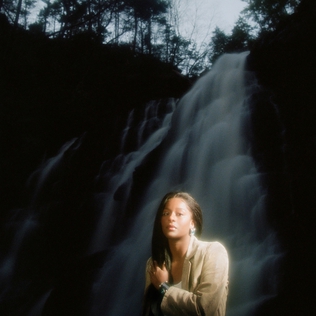
Fatigue is the second record by Brooklyn-based experimental musician Taja Cheek, under the moniker of L'Rain. It is her first recording with record label Mexican Summer. Fatigue builds on Cheek's experimental compositional approach, drawing from an eclectic collection of genres and employing field recording elements. Instrumentally, it has help from twenty collaborators, who lend the record clavinet, saxophone, and more.





















